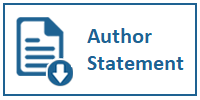Using the Scrum Method to Developing Population Information System
DOI:
https://doi.org/10.31937/si.v15i1.3590Abstract
The adoption of Population Information System is crucial to enhance work effectiveness and serves as a manifestation of transparency in population data management. The complexity from design to implementation of such a population information system poses its own challenges. There are at least three main issues in system design, namely time estimation, team management, and ensuring the quality of system being developed. These issues must be addressed early on to prevent potential team management problems during the design and development stages of the application. One suitable method that can be employed for the design of the population information system is the Scrum methodology. Scrum is a software development framework that emphasizes a collaborative and adaptive approach. It falls under the Agile methodology, aiming to produce products that are more responsive to changes and enabling teams to adapt quickly in a dynamic environment. Scrum also promotes transparency in the development process, aiding in monitoring system progress and information accuracy. Compared to the commonly used Waterfall method, the Scrum approach offers greater flexibility in dealing with changes in requirements or needs that may arise during the development process. While the Waterfall method tends to follow predefined in linear steps. The novelty of this research lies in the proactive approach to addressing the complexity of designing population information systems by implementing Agile methodologies such as Scrum. Thus, it is expected that the implementation of Scrum will bring significant changes in improving the effectiveness and transparency in the development of population information systems.
Downloads
Downloads
Published
How to Cite
Issue
Section
License
Authors retain copyright and grant the journal right of first publication with the work simultaneously licensed under a Creative Commons Attribution-ShareAlike International License (CC-BY-SA 4.0) that allows others to share the work with an acknowledgement of the work's authorship and initial publication in this journal.
Authors are able to enter into separate, additional contractual arrangements for the non-exclusive distribution of the journal's published version of the work (e.g., post it to an institutional repository or publish it in a book), with an acknowledgement of its initial publication in this journal.
Copyright without Restrictions
The journal allows the author(s) to hold the copyright without restrictions and will retain publishing rights without restrictions.
The submitted papers are assumed to contain no proprietary material unprotected by patent or patent application; responsibility for technical content and for protection of proprietary material rests solely with the author(s) and their organizations and is not the responsibility of the ULTIMA InfoSys or its Editorial Staff. The main (first/corresponding) author is responsible for ensuring that the article has been seen and approved by all the other authors. It is the responsibility of the author to obtain all necessary copyright release permissions for the use of any copyrighted materials in the manuscript prior to the submission.















